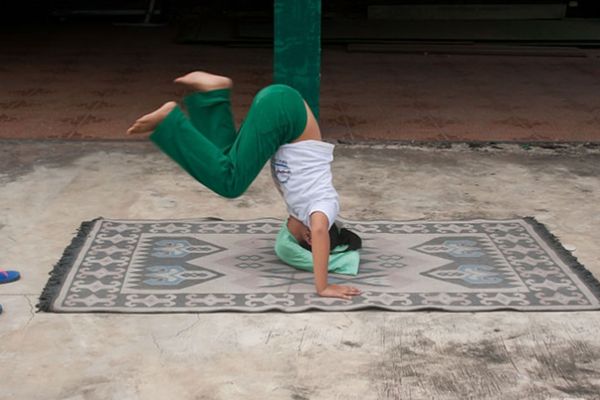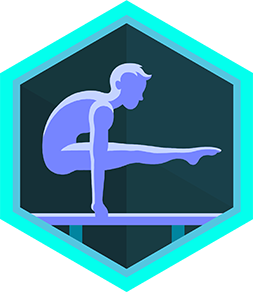Do a roll
Learn to do a forward roll safely by practicing body tuck, head positioning, and controlled rolling on a soft mat to build balance.



Step-by-step guide to do a forward roll safely
Dice Games for Kids // addition dice games for kindergarten, first, and second grade!
Step 1
Clear a space and lay the mat flat on the floor so you have a soft area to roll.
Step 2
Warm up by marching or jogging in place for one minute to wake up your muscles.
Step 3
Sit on your knees and practice tucking your chin to your chest five times so you get used to protecting your neck.
Step 4
Kneel and place your hands on the mat shoulder-width apart with fingers spread to make a steady base.
Step 5
Do one knee forward roll: tuck your chin to your chest and roll forward from your knees onto your back and then sit up.
Step 6
Stand in a low squat with feet shoulder-width apart and place your hands on the mat in front of you ready to roll.
Step 7
Do one low-squat forward roll: tuck your chin and push with your legs to roll forward smoothly over a shoulder and come to a seated position.
Step 8
Repeat the low-squat forward roll five times, resting between each try and keeping your chin tucked every roll.
Step 9
Have an adult spot you by standing beside you and guiding your hips as you try three assisted rolls.
Step 10
Share a photo or short description of your finished forward roll practice on DIY.org
Final steps
You're almost there! Complete all the steps, bring your creation to life, post it, and conquer the challenge!


Help!?
What can we use if we don't have a mat for the rolls?
Use a folded blanket, yoga mat, thick carpet, or towel laid flat on the floor as the 'mat' so you still have a soft area to roll as the instructions require.
I'm having trouble tucking my chin and keeping my neck safe when rolling—what should I do?
Spend extra time on the 'sit on your knees and practice tucking your chin to your chest five times' step, keep hands shoulder-width with fingers spread for a steady base, and have an adult spot your hips while you roll slowly to avoid neck contact.
How can I adapt the activity for different ages or abilities?
For younger children do assisted knee rolls with an adult guiding the hips and fewer repetitions, while older kids can repeat more low-squat forward rolls, increase pace, or add sets after the one-minute warm-up.
How can we extend or personalize the forward roll practice?
Make it more fun by creating a mini obstacle course that finishes with a low-squat forward roll, timing five rolls to track progress, or recording a photo/short clip to share on DIY.org as suggested in the instructions.
Watch videos on how to do a forward roll safely
3 Maths Dice Games For Kids | Games To Play With A Dice
Facts about tumbling and basic gymnastics for kids
⏱️ Just 5–10 minutes of daily practice can noticeably improve balance, control, and comfort with rolling in a few weeks.
🧠 Practicing rolls improves proprioception — your brain’s sense of where your body parts are in space.
🛡️ Tucking the chin to the chest and rolling over the shoulder (not the neck) greatly reduces head and neck impact.
🧒 With a soft mat and adult supervision, many children can begin simple tuck-and-roll progressions as young as 3–5 years old.
🤸♀️ The forward roll is a basic somersault taught early in gymnastics to build coordination and confidence.
How do you teach a child to do a forward roll safely?
What materials do I need to teach a forward roll?
What ages is learning a forward roll suitable for?
What are the benefits and safety tips for practicing forward rolls?


One subscription, many ways to play and learn.
Only $6.99 after trial. No credit card required



